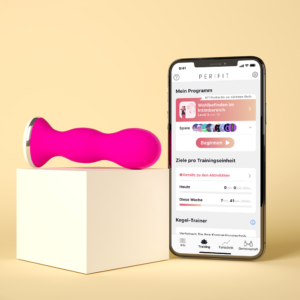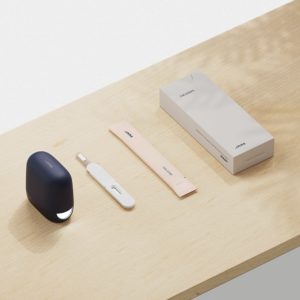4 min read
The Rise Of Femtech In 2022
Where are we now?

As we enter 2022, “Femtech” is a well-established and often discussed term in the tech sphere. Technologies catering to women’s health and fitness are a hot topic, now moving beyond the fertility tracking apps where it all began. First coined by early femtech pioneer, Ida Tin, back in 2016 and today a rapidly growing industry, femtech refers to startups and companies designed to research, innovate, and support women’s health.
With 49.5 percent of the global population as it’s target audience, the category has expanded to encompass pregnancy and maternal care, sexual health, and chronic disease, amongst others. From your first period all the way to menopause, women’s health is complex, messy and has historically led to gaslighting or misunderstanding by doctors as a result of lack of research.
However, despite the initial enthusiasm for the sector, femtech still has some glass ceilings it needs to break through. Going into 2022 it remains an undeveloped area of healthtech with only 4% of healthcare R&D going towards women’s health, according to TechCrunch. Analysis from Rock Health shows Femtech funding declined to 3.3% in 2019 and while average deal size grew between 2013 to 2018, it has stagnated in the past few years.

The lack of investment in femtech startups has been linked in the difficulty in getting capital to female entrepreneurs. 2.8% of VC funding that went to women-led startups fell to 2.3% in 2020, according to Crunchbase figures. 92% of the 200 femtech startups worldwide are founded and led by women. When you compare that to the 12,000 fintech startups in operations today, you can see where the problem lies.
But it’s not all doom and gloom. With a global market forecast to stand at $50 billion by the year 2025, the future of femtech is still something to get excited about. With the opportunity for clinical diagnostics, bio-pharmaceuticals and medical device companies are tapping into this ever-growing market, with established and startup companies both making waves within the industry.
One such company is FEMNA, a female-led telemedicine startup based in Berlin, rethinking women’s health in Germany and offering diagnostics, advice and solutions online. Perifit is another Paris-based startup to watch, who launched a wireless Kegel trainer designed to help women strengthen their pelvic floor muscles by controlling video games with their Kegels.

Alongside the personal benefits of these technologies, they are also proving to be integral to developing and improving the scientific understanding of women’s bodies, which to this day have been poorly under-researched. Read Your Body is a menstrual cycle charting app created by an all-female, non-profit organisation – The Body Literacy Collective – based in the UK and 100% crowdfunded by users in the fertility awareness (FAM) community. Another startup you are probably familiar with is inne, based in Berlin, who landed 8 million euros in a Series A funding round to create the first hormone-based mini lab that tracks fertility and ovulation based on saliva.
Until 2021 femtech service providers have focused on menstrual health, menopause, sexual health, mental health for women, lactaction, postpartum depression, and dating services. But what are the top trends to watch out for in 2022?
Apps designed to track and prevent violence against women have high potential, with the market valued at just under $25 million in 2021. Also apps to track and monitor mental health in women and at-home vaginal testing for other-than-pregnancy like conditions have been tipped as ones to watch.

Rather than evolving as a marginal sub-category, despite the odds the femtech industry is demanding space and attention and opening up conversations about traditionally taboo topics. This is the energy we want to carry into 2022. Are you with us?
Want to read more about inspiring women in FemTech? Check out our 7 Women In Medtech You Need To Know About here.
